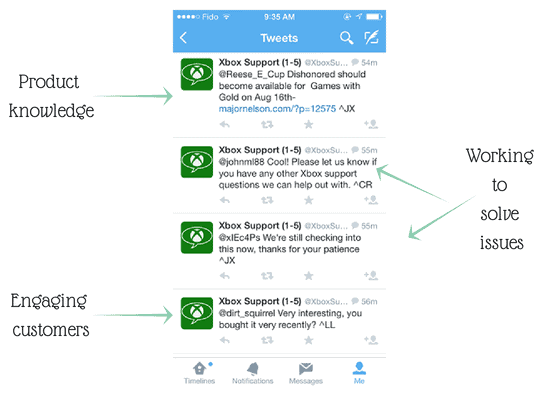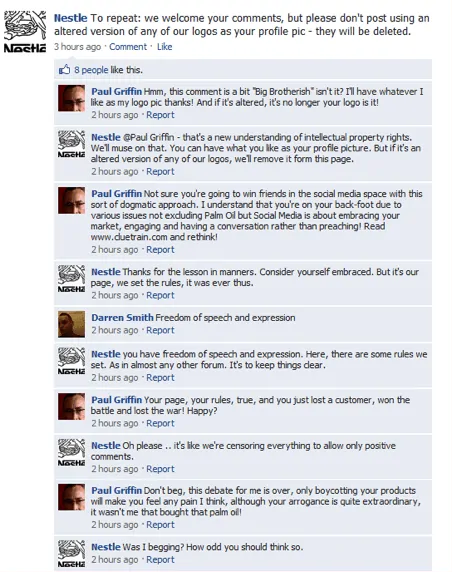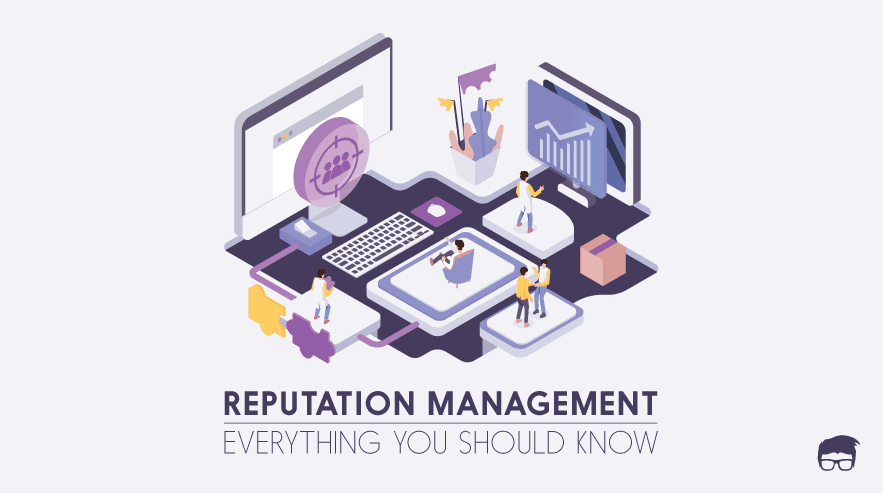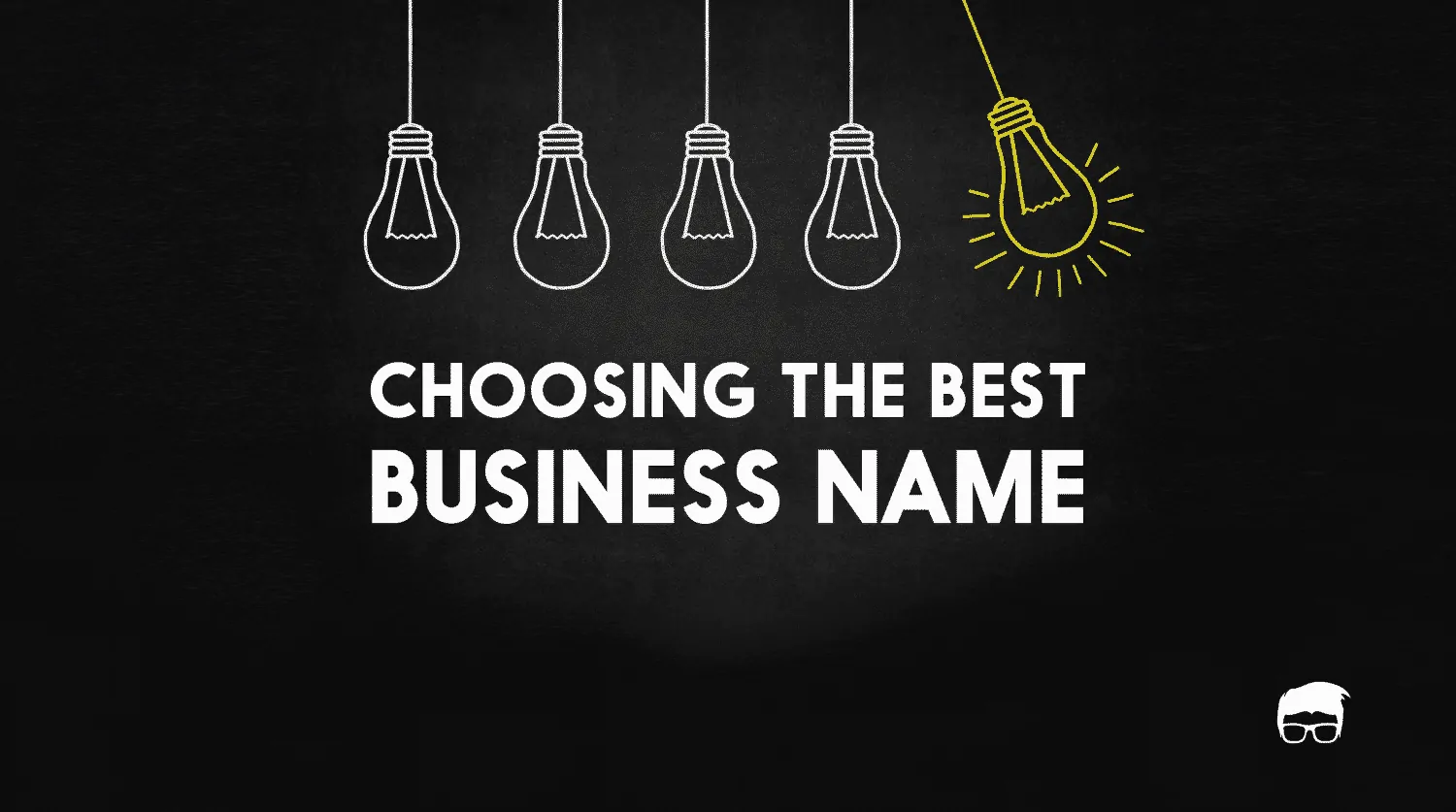Before stepping out of the house one always makes sure they look sharp, presentable, and crisp right? We all wonder about how we present and carry ourselves in public. Similarly, ever wondered how your brand carries itself in the real world? What impressions do people have of it? Are they pleased or dissatisfied? Even as you are reading this guide you might have multiple other tabs with similar guides open for reference.
Therefore, to make sure that your business has that sharp, presentable, and crisp factor to make people come back to you, trust your brand, and feel positive, you must focus on managing your online reputation.
Let’s begin with what does online reputation management even mean.
What Is Online Reputation Management?
Online reputation management refers to the practice of administering the perception that comes up when an individual, brand, or company is searched for on the internet.
There are two components to this definition:
- Public perception: it refers to the idea of the respective brand or company that is widespread online. This public perception is further divided into positive public perception and negative public perception.
- Administering the perception: This is nothing but management. Being able to manage online reputation means resolving the negative public perception and promoting positive public perception.
In simple terms, online reputation management also called ‘rep. management’ or ‘ORM’, focuses mainly on monitoring the reputation of a brand over the internet.
Online Reputation Management Objectives
The 3 main objectives of online reputation management are like the golden triangle of ORM. These objectives essentially convey what ORM aims to do:
Repairing Online Brand Reputation
The first and foremost objective is to repair the existing brand reputation on the internet. Initially, when a brand steps into the online world, it may not focus on working on its brand reputation. But eventually, a brand reputation is formed, be it favourable or unfavourable. Therefore, the primary aim is to repair this prevailing brand image.
Enhancing The Positive Online Brand Reputation
The second objective of online reputation management is that it aims to enhance the positive brand reputation. The goal here is to fill the online space with as much positive information possible. This objective can be fulfilled by way of feedback forms, review questionnaires, after-sales services, and public relations strategies, and more.
Tackling Negative Comments
The third very important goal of online reputation management is to tackle negative comments. Though this is listed as the last objective, it can make or break the reputation game.
How?
Negative comments are like a whirlwind. If the whirlwind is dealt with calmness and sharpness then it can be tamed to normal water, if the whirlwind is not dealt right then it can turn into a wild, wild hurricane. And the internet is also a wild space, it spares no one.
Why Is Online Reputation Management Important?
81% of shoppers conduct online research before buying. This research includes company reviews, product reviews, along with real customer feedback.
All it takes is one review, one comment, one tweet, to shape your brand reputation on the internet. It would a fool’s paradise for a business that ignores its public perception. Besides this, here are more reasons why you should get started on managing your online reputation straight away:
Creates The First Impression
The internet is the first space that people land on when looking for a solution to their problem. Therefore, it is important to manage what people see and hear about a brand when they land on it.
It is at this ‘first impression’ stage where you can either gain a loyal customer or lose one to your competitors.
For instance, in 2017, United Airlines officers had to forcibly remove a passenger from flight 3411 flying to Louisville because the flight was overbooked. As a result of the video going viral of the passenger being removed, the airlines lost around $950 million in the share market.
This incident not only caused heavy cancellations from existing customers but also deteriorated the brand image in front of many prospective and new customers. They would now never fly with United Airlines even without having any experience with it.
Builds Credibility
Gaining the trust of customers is half the battle won for any brand. Whether it is an individual seller or a B2B client, the internet is a space for everyone to raise their voice if they are happy with a service or if they are not. A dissatisfying voice will catch up much more heat than a satisfied one. So, what’s the solution?
This is where online reputation management comes in. It is highly important because it helps to build credibility for your brand. ORM is important because it shows the world that you are connected to them and you care about what they think.
I will NOT fly United ever. You had a passenger who did nothing wrong beaten and knocked out then DRAGGED out! #boycotunitedairlines
— Zoe Kyttn🇩🇰🇸🇪🏴 (@ZoeKyttn) April 12, 2017
Improves SEO ranking
Customer reviews and online reputation create a huge impact on SEO.
How?
Search engine algorithms are developed to understand that consumers place a lot of importance on online reviews when making a decision.
Imagine if dissatisfied posts about a business gain ranking in search engine results which is higher than positive posts. Such a business would be highly likely to experience a fall in traffic. Therefore, your business needs to make its best effort to manage online reputation.
Helps Separate (Or Connect) Individual And Brand Reputation
The public perception of the stakeholders’ reputation has a halo effect on the brand perception too.
For instance, if any of the stakeholders is imprisoned for a wrong deed, the brand is adversely affected. This is where reputation management comes to rescue.
Affects Recruitment
Another reason why ORM is important is that it drives applications towards job openings. Any candidate nowadays conducts intensive online research before applying to companies. When a potential candidate searched for your company, poor reputation management will push the candidate away.
Therefore, managing your online reputation is important to get your customers as well as prospect candidates, both on your side.
How To Build An Online Reputation
While every company has its strategy to build its reputation online, here are six broad steps one can follow:
Plan What Aspects You Will Be Monitoring
Before you dive into building and managing your online reputation, make a list of what you want to manage. These could be –
- The overall company’s brand image.
- Company’s offerings’ reviews
- Renowned employees and stakeholders profiles
- Social media profiles
- Often searched industry keywords
- Competitors’ reputation
Assess the current situation
The most basic step toward building your online reputation and managing it would be to understand your current standing.
The easiest, yet most effective way of doing so is by Googling your company name. Upon doing so, check review sites, blog sites (like Quora), etc. Try your best to make note of every nook and corner wherever your brand name has come up.
You can even set alerts on Google to receive an email every time your brand gets mentioned over the web.
After you have substantial data regarding what the internet is saying about you, divide it into positive, negative, and neutral.
Develop A Brand Reputation Building Strategy
Now you have data about your current standing over the internet. Next would be to re-evaluate your goals and draft a strategy that makes use of the gathered data to achieve your goals.
The strategy may include –
- Partnering with influencers (or even curators): Often brands make use of influencers and curators with high followers to build a favourable online reputation.
- Partnering with other brands: Partnering with brands with a good online reputation is considered to be a good ORM strategy for brands just starting with it. New brands may have edgy ideas, but customers are usually hesitant to trust new brands. If a brand with an established name endorses another, it may immediately develop trust amongst customers. For the consumer, it is like getting a recommendation from a trusted friend.
- Developing a community of loyal customers: Many brands make use of loyal customers to do the job of online reputation management for them. They create groups and host competitions and giveaways to encourage loyal customers to promote the brand over the web.
- Create An Inbound Marketing And Content Marketing Strategy: To inculcate an inbound marketing strategy involves making use of the data of what customers look for on the internet :
- Before a purchase
- During a purchase
- After a purchase
Once analysed, comes the content marketing strategy. Under this, you would make content that uses the keywords, phrases, and sentences that match the data you gathered in the previous steps.
- Draft A Criticism Management Strategy: No matter how good a brand is, there are always some dissatisfied customers. Managing online reputation often involves developing a criticism management strategy to keep these customers satisfied. This means creating structures for responding to criticism. For instance:
- Start with a calming and positive response, like thank you
- Move on the address the consumer’s query and accept your mistake
- Next, provide a solution that is practical for the consumer
Tips To Manage Online Reputation Better
Once you have understood where your online reputation stands and what is says about you, your next step ought to be managing the online reputation. Online reputation management can be seen as a gradual step-by-step process. This does not mean, however, that once you perform these steps your online reputation would be managed forever. You must actively engage in these steps repeatedly:
Be Transparent
Be transparent to your consumers and employees. Transparency is not a fancy word to throw around your brand, it’s a strategy that should be applied to all aspects of your business. If today your popularity has increased because you have hidden certain aspects of your business, remember that it will come out one day. Nothing stays hidden forever. Therefore, to manage your online reputation, you must make sure that while responding to online reviews you are transparent about your processes.
A big fast-food chain like McDonald’s had to change their ways of raising hens for their chicken and egg products because users found out that they were no following the basic living standards for the hens.
Monitor Search Results Related To You And Your Offerings
It is primarily important to monitor what aspects people are searching about for brand.
Brands often start with monitoring search results but stop as soon as their reputation turns positive. This is the most dangerous thing to do. There is always a risk of losing your reputation because you failed to manage it. There is also the risk of your negative public perception increasing and overpowering your positive public perception.
Besides this, many brands don’t notice that it’s not merely the brand name the customer searches for, it’s the offering. The general offering niche means dealing with your pricing, reviews, giveaways, or discount coupons.
Manage Online Reputation Bombs
Online reputation can get into two types of cycles:
- Virtuous cycle
- Vicious cycle
The virtuous cycle is about a brand receiving positive content, appreciating it, and promoting more positive content through engagement techniques.
The vicious cycle involves what we call ‘online reputation bombs’. This includes:
- Negative reviews – Review websites and forums like Google, Yelp, Yellowpages, Reddit, Quora, etc. provide information about what your audience thinks of you. Are people interested in your product? Are they criticising it? All the unaddressed criticism here is a ticking bomb.
- Hate sites – People may go to the lengths of creating entire websites that aim at promoting negative feedback for a particular brand.
This includes statements like: “The truth behind XYZ brand”, “XYZ brand ripped me off, and will rip you off too”, “XYZ brand is a scam”.
You must understand whether the content on these websites is too extreme and should be officially investigated? Or can you trace the creator and attempt to calmly address him/her? - Negative media coverage – Marketers often swear by ‘all publicity is good publicity’. This would hold in a time where everyone didn’t have access to the internet. In today’s times where anyone and everyone can tweet harsh feedback about your brand, this does not hold. Be it TV, print, or online media coverage if it has a negative tone it needs to be resolved by managing the scrutiny.
Respond To Criticism
It is easy to respond to pleasant and satisfactory messages. But then in the real world, it is impossible to run away from negative messages. The key to responding to negative messages is:
Don’t take it personally
Always keep in mind that no user is trying to attack you. Even though in rare cases people might attack a person through his/her brand, it is important that publicly you maintain an image of holding your calm and not taking it all to your heart. Be professional, respond to negative comments keeping in mind that you are defending your product/service and not your self.
Make sure to respond to negative comments
All negative answers need to be responded to. If a person is conveying a negative experience then attempt to resolve it by providing clarity and a resolution. Angry tweeters will calm down only if you respond, listen, and offer a solution. Remember to make sure you do all of the three. If you respond without considering their point of view, it might go like this –
Customer: “I found a cockroach in your doughnut, please work on your health standard or leave!”
Reply 1: “We appreciate your concern.”
Reply 2: “Sorry to hear that, come again and won’t disappoint you.”
In either of the cases, in a matter of a few hours, your brand will be blown up. In case 1 you are responding without listening and providing a solution. In the second case, you are providing a solution i.e. coming back to visit, but you are not listening. An appropriate response would be to apologise and mention that your outlet will close for a few hours and conduct a vigorous health check and insect removal process.
Examples of good online reputation management
Nike support
Nike has created a whole separate Twitter account that focuses on addressing customer queries called @TeamNike. In this way people don’t tag ‘Nike; when they have an issue with the brand or the product, people tend to tag ‘TeamNike’. This way Nike can narrow down who is talking to them and focus on them.
The important takeaway here is that Nike showed its dedication to its customers. They smartly separated their brand name ‘Nike’ to ‘TeamNike” to show that they have a dedicated page and team to listen to all consumers.
Stamford Plaza Brisbane
Stamford Plaza Brisbane shows a very structured and excellent example of how feedback must be handled. People buy more than the product/service, they buy into the associated emotions. So naturally, consumers are emotionally connected. The key they follow here is to be professional and classy. Stamford Plaza Brisbane makes it a point to follow this structure:
- Start with a thank you. This shows that the company is listening and they appreciate being told about what consumers think. They thanks all positive and negative reviews alike.
- Next, they move to mention any positive experience they can dig from the consumer feedback. Even is the feedback is negative they try to find a positive aspect. This is done in an attempt to show that ‘not everything about us is bad’.
- Lastly, they provide an action plan as to how they will address the issue. This last part also includes what steps they will take to ensure that the issues do not recur.
Xbox
Xbox holds the Guinness World Record for “Most Responsive Brand on Twitter”.
Their working hours are 6 am – 12 am PT Monday to Sunday. This shows that even though you are constantly monitoring and engaging with your customers, maintain a reasonable air of professionalism. The customer support team is quick to respond, funny as well as engaging with customers. They attempt their level best to resolve any and every issue along with keeping fans updated with all latest releases, tech, and games.

Examples of bad online reputation management
Now that you have an idea of all the right steps to go about online reputation management, let us look at examples that elaborate on what can go wrong:
American airlines
The worst response that can fall into your ORM strategy would be to provide a generic and unhelpful response. Unfortunately, this is what American Airlines did for a very long time. The takeaway here is don’t give responses that don’t help. Remember the three golden rules – respond, listen, and offer a solution.

Nestle
A big lesson to take from this example of Nestle is –
‘don’t be haughty.’
People giving unsatisfactory reviews are not looking for starting intellectually supreme debates. You do not need to stick to the idea that ‘the customer is always right’ but you do not treat your page as a page that negates negative reviews too. Nestle here, didn’t have to worship the customer it was talking to, but it could have used a less disrespectful and haughty tone.

Go On, Tell Us What You Think!
Did we miss something? Come on! Tell us what you think about our article on online reputation management in the comments section.
A marketer with a specialisation in Economics, Law and Computer Studies. Performed social media marketing for McDonald’s, GoIbibo, and LaughGuru.









